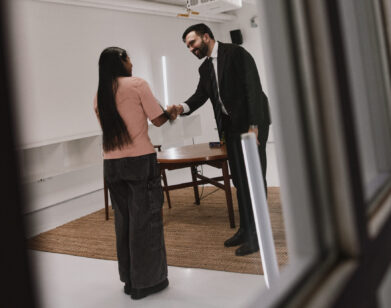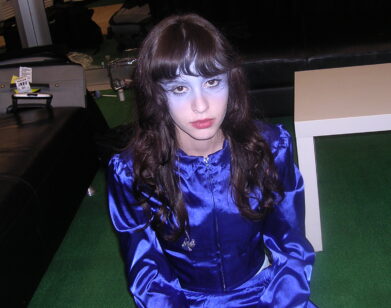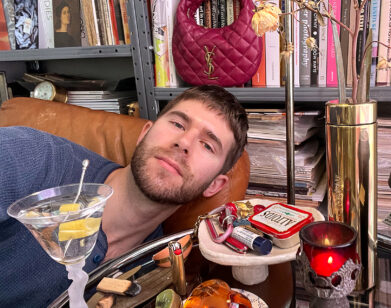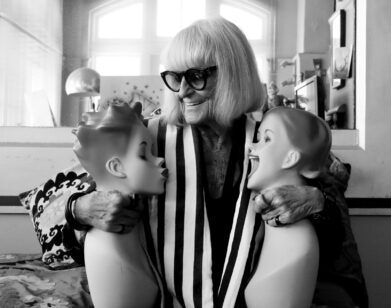Chef John Fraser’s Exacting Standard
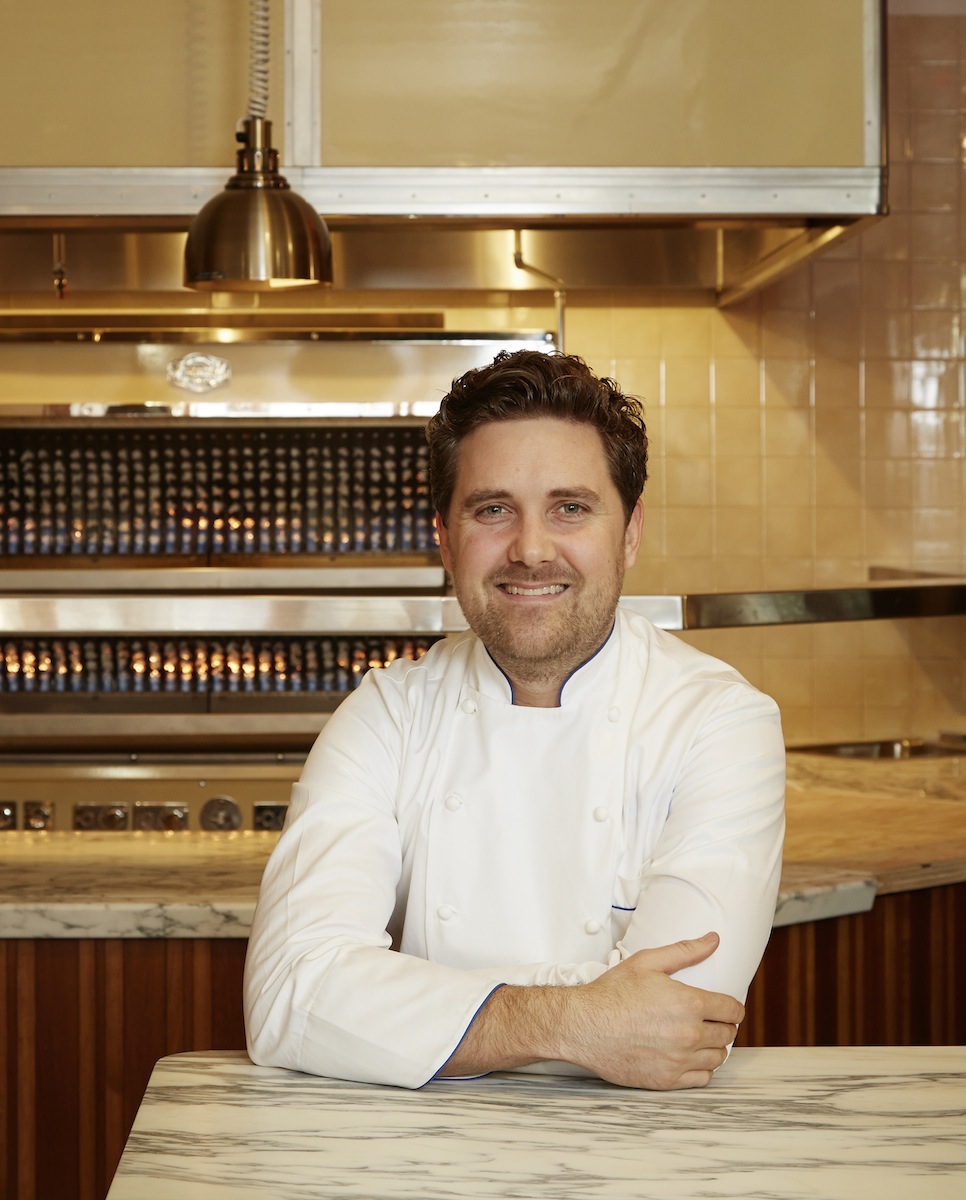
ABOVE: CHEF JOHN FRASER. PHOTO COURTESY OF THOMAS LOOF
Despite what you might think upon first glancing at the name of The Standard East Village’s brand-new restaurant, Narcissa, its name isn’t a reference to flowers or to mythological vanity: rather, it’s the name of one of the cows at André Balazs’ farm upstate, where Narcissa sources much of its produce.
That close-knit, true farm-to-table relationship was what drew the interest of Chef John Fraser, who came up in the similarly-minded, iconic Napa restaurant The French Laundry before moving to New York and opening the Michelin-starred Dovetail on the Upper West Side in 2007. With Narcissa, he’s aiming for freshness of all varieties: both in the just-harvested ingredients and in the new and playful ways he combines them.
ALEXANDRIA SYMONDS: What distinguishes the East Village crowd for you versus someplace like Dovetail?
JOHN FRASER: Actually, they’re very similar in that a lot of people coming through are neighborhood. Most of the people that have been here, on week one, have been in the East Village social circuit or they live around here, which has been kind of cool because it took us over a year to build this and there’s been a little bit of waiting to open. So it’s fun to see people walk through the door, either having seen the iteration that it was before, or having seen it in construction and just be like, “Oh wow. Look what they did,” kind of thing. Dovetail was the same thing; most of our people that go there are regulars or neighborhood people. We have a huge stock of people that come, either once-a-weekers or once-a-monthers.
SYMONDS: What were some of the characteristics of your East Village neighborhood diner that you wanted to bring to this menu?
FRASER: Obviously the demographic of people who live around here are slightly younger, and we’re serving food much later here. People stay out later down here. We’re taking the same philosophy that we do at Dovetail with the food there, which is very ingredient-focused, very vegetarian and vegan-friendly, focusing on the season and creating little surprise moments that can be exciting and craveable, but not touching the food too much.
SYMONDS: What are some of the surprise moments? Is that something you can ruin for me?
FRASER: Sure. We’re doing this rotisserie beet dish that we cook very, very long on rotisserie and it creates almost like a charred exterior and a very meaty interior. There aren’t very many restaurants that are leaving the skin on beets serving them. Another is we’re serving eggs from our farm, but the eggs are cooked in the shell—which isn’t necessarily a new thing, but we’re presenting the egg and the table and cracking it and pouring the egg tableside, which I think is a little bit new and it’s fun; the fact that you see a blue-and-brown egg coming to your table. Being poured tableside, there’s little bit more—I always use this word— connectivity, where it’s not just an egg in a bowl: it came out of a shell and the shell came from our farm and there’s a little bit of a story and a throughline, which I think is exciting.
SYMONDS: Can you talk a little about working with André [Balazs] and what you wanted to bring from the hotel into the restaurant as well?
FRASER: Sure. André and I met almost exactly two years ago. He’d been to Dovetail a couple of times, and he’d just recently purchased the hotel, and we just struck up conversation about, “What would we do here?” Given our resources, given the space, what kind of restaurant could we do here? So that turned into quite a long conversation, like six months or something, until we came to a place where we said, “This will work” and “This is something we can both get excited by.”
Obviously, being involved with The Standard brand and someone like André is fantastic, but for me the clincher was the relationship with the farm and the relationship I have with the farmers themselves; and the ability to really control how the food looks coming in the door, not just manipulating the food to make it look just the way we want. There’s so much that I didn’t know about farming, and I make food for a living…
SYMONDS: [laughs]
FRASER: And visiting the farm and seeing their facility; it’s sort of that insatiable, “I wanna learn.” Obviously, I have some mastery of cooking and the next step is connecting with, where does it come from and how can we add that next level of creativity by controlling what we’re growing and during what season and how we get it to the table.
SYMONDS: How much input do you have in, for example, what’s being grown? Are you trusting the famers or are you thinking ahead and saying, “Listen, I want this kind of heirloom tomatoes come September”?
FRASER: Right. It’s a very common conversation, firstly… because what you should understand is farming is dirty.
SYMONDS: Yeah, of course.
FRASER: [laughs] It’s about the soil, it’s about the season, and it’s about the conversation more than anything. It’s about, “Here’s what I want,” and, “Here’s what I want to see.” We get together and we say, “What is most prolific?” Obviously, “What grows the best and at what time of year?” and also “What things are exciting to us?” And there’s always this little portion of, “What can we experiment with? How can we start to play and see if things work?” So I obviously have my favorite heirloom tomatoes and they have theirs, and they have the most successful in their microclimate—so we’re growing all three of those. Actually, just two weeks ago we purchased the seeds for next year. So the seeds will be coming in early spring, we’ll be planting throughout spring and summer and early fall.
SYMONDS: Yeah.
FRASER: So it’s not like calling Amazon and saying, “I want a book.”
SYMONDS: [laughs]
FRASER: It’s much more of a conversation about, “What do you like to read? How much time do you have?” It’s a long conversation. We just got dropped on us a ton of beets that they have in their store, in the root storage, and now our challenge is: “What are we going to do with all these beets?” and “How are we going to play with them and get creative?” So, like I said—it’s not like I call up and say, “Hey, you know what I need this week is 20 pounds of lettuce and 1,000 eggs”—that’s not how it works. It’s a little bit more like, “Hey, here’s how many eggs we have, and what are you going to do about it?” So if there’s a surplus of eggs, I’ve got to come up with a few egg dishes and if there’s not enough eggs, then I’ve got to take the egg dish off the menu. It’s just that kind of relationship.
SYMONDS: Yeah. That must be very exciting.
FRASER: It is; it’s developing a new muscle
SYMONDS: That must have been something with which you had a little experience, right? The French Laundry is basically that way.
FRASER: Yeah, it is, except that I was a cook there. [laughs]
SYMONDS: Right. [laughs]
FRASER: So I was on the receiving end of a lot of these conversations that were happening. There’s an orchard farm around the corner, we would go pick our own vegetables and fruits and stuff, but the difference there is that the scale was a little bit different. It was a tasting menu, so the portions were small. This scale is slightly larger. At some point, if you come to Narcissa five times, we’re going to run out of something—it’s just going to happen that way. If you really are dedicated to going farm-to-table, that’s just a reality of it.
SYMONDS: Yeah. Does it feel more, sort of the atmosphere, more like a West Coast restaurant to you than some of the some of the places you’ve been in New York?
FRASER: I have trouble now distinguishing, but here’s what I can tell you: the design of it is brilliant; it’s super open and airy; there’s a lot of relationship with the outside. Both rooms have these huge windows, and something about that relationship to outside feels like you’re not in a box, which is what most of us live in if you live in New York City. A lot of the food and the way that the food interacts with the design is very—I wanted it to be California and I wanted it to be West Coast, I’ve been trying to use words like relaxed, informal, and I think that we’ve achieved that.
SYMONDS: Can I ask you a little bit about your time in California? When did you know you wanted to be a chef?
FRASER: I was an Anthropology major in college and after I went to Los Angeles and started cooking—I was cooking all through college and bartending, sort of a restaurant person, but I didn’t really take it seriously until after college, at which point I went to L.A. and cooked for a couple of years. I got connected with what it means to be a chef there—back when I was in college, there weren’t a lot of chefs walking around, and there were only a couple on TV, if any. After that I got a job at The French Laundry and I basically lied and cheated and stole my way in [laughs] and loved my time there. I’ve said it a couple of times, but it made me not just a good cook, but a better person. It really grew me up into being responsible and super dedicated and focused and all the things that may have already been inside of me, but developed them very clearly. It was at the time that Thomas [Keller], he was still working every single day with us, so I worked right next to the guy for a couple of years and it really changed the way that I saw the world: the way I saw food and the way that I saw greatness—what it would take to get to that next level? It’s all because of Thomas. He still lives over my shoulder; many times a day I look over and say, “What would Thomas do?”
SYMONDS: [laughs] Were there any sort of memorable or key moments, working with him?
FRASER: Yeah. I think I cook a little bit more with my mind than I do with my soul, so for me it was always more about the narrative. Good food tastes good—it’s just undeniable, but when there’s a story and there’s narrative, I get a lot more excited by it and the entire French Laundry experience is based around narrative. It’s based around not just “What?” but “Why?” and also trying to have as much fun as possible. Food is fun; if you can’t make people have fun, then you’re going to fail. So there’s this constant of not only does bacon and cod and the word “chowder” work, but why are we doing it? What is the bacon, and why that bacon? Why that cod? Where does that cod come from, and who caught it, and how was it treated? Creating that narrative, that all came from The French Laundry. If I had to put my finger on what California cuisine means—it means many things, but to me what it really means is about narrative and is about ingredients. Those are the two main things. And it’s not that New York cuisine isn’t that, but I think California succeeds best at that.
SYMONDS: As an anthropology major, do you apply those principles to the kitchen, or do you think of those things as separate parts of yourself?
FRASER: No. Actually, a lot of my hobbies apply those: wanting to travel and wanting to discover is a huge part of anthropology, but also being able to look at things using that kind of worldview—again, it’s all about that story thing. I sound like a broken record, but it’s all about trying to study something and looking at a menu, whether it be mine or someone else’s, and saying, “Not only is that ingredient on a piece of paper, but there’s a reason for all of this; is it where they came from, is it what they’re trying to say?” I always try to encourage people who have worked for me to look into the past and their childhood and into their upbringing and say, “What are those flavor memories? What are those things that give you that lightbulb?” so that you can apply them in your way to something new.
SYMONDS: Do you see kitchens as being little societies? When it comes to running one, do you think there’s anything that distinguishes them from any other group of people—working in an office together or something?
FRASER: I’ve never worked in an office before, but I think the workplace is a culture and that culture has leaders, it has misfits; it has all the things that a society has. Successful kitchens and successful restaurants have the same thing that a successful culture has, which includes all of the ugly and annoying parts of culture. It’s a group of people. And I think that when we go to restaurants, it’s very easy to forget that a human grew that piece of food, a human cooked that piece of food, a human is serving that piece of food, and if it’s anywhere close to good… it’s pretty miraculous. [laughs] Because humans are messy; humans aren’t quite as robotic as we’d like them to be.
NARCISSA IS NOW OPEN AT THE STANDARD EAST VILLAGE, 25 COOPER SQUARE, NEW YORK. FOR RESERVATIONS AND MORE ON THE RESTAURANT, PLEASE VISIT ITS WEBSITE.

